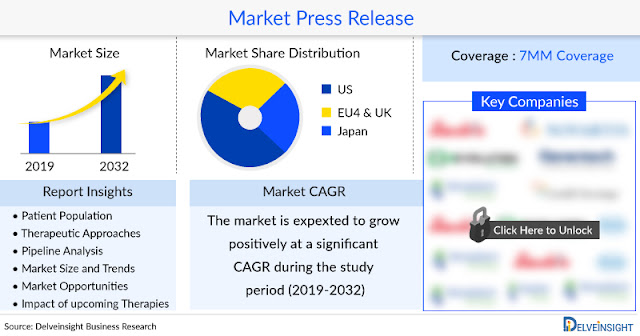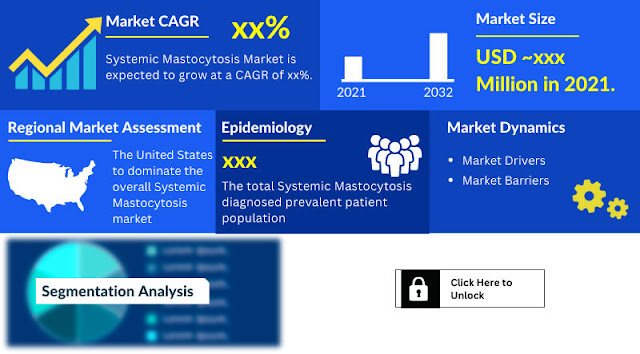Stem Cell Market Outlook: A Comprehensive Analysis by DelveInsight
Stem cell therapy has emerged as a promising field in the realm of regenerative medicine, offering potential treatments for a wide range of diseases and conditions. As research in this area continues to advance, the global stem cell market is poised for significant growth in the coming years. DelveInsight, a leading market research and consulting firm, recently conducted an in-depth analysis of the stem cell market, providing valuable insights into key trends, challenges, and opportunities shaping the industry landscape.
Stem Cell Market Overview:
The global stem cell market is experiencing rapid expansion, driven by increasing investment in research and development, growing prevalence of chronic diseases, and rising awareness about the therapeutic potential of stem cells. Stem cell therapy holds promise for treating a diverse array of conditions, including cardiovascular disorders, neurodegenerative diseases, orthopedic injuries, and autoimmune disorders. Additionally, advancements in stem cell technologies, such as induced pluripotent stem cells (iPSCs) and CRISPR gene editing, are opening up new avenues for personalized medicine and regenerative therapies.
Key Trends and Drivers:
Several key trends are influencing the growth trajectory of the stem cell market:
Increasing Research and Development: Pharmaceutical and biotechnology companies, academic institutions, and government agencies are investing heavily in stem cell research to explore novel therapeutic applications and advance clinical trials. This heightened R&D activity is driving innovation and expanding the scope of stem cell-based therapies.
Growing Adoption of Regenerative Medicine: The shift towards regenerative medicine approaches, which focus on harnessing the body's natural ability to heal and regenerate tissues, is fueling demand for stem cell therapies. Regenerative medicine offers potential solutions for addressing unmet medical needs and improving patient outcomes across various disease areas.
Expanding Applications in Oncology: Stem cell-based therapies are increasingly being investigated for their potential in cancer treatment, including hematopoietic stem cell transplantation for hematologic malignancies and engineered T cell therapies for solid tumors. These advancements are reshaping the landscape of cancer care and offering new hope to patients with refractory or relapsed cancers.
Technological Innovations: Advances in stem cell technologies, such as 3D bioprinting, organoid culture systems, and tissue engineering, are enhancing the development and delivery of stem cell-based therapies. These technologies enable the creation of complex tissue constructs and models for drug screening, disease modeling, and transplantation purposes.
Challenges and Opportunities:
Despite the promising outlook for the stem cell market, several challenges must be addressed to unlock its full potential:
Safety and Efficacy Concerns: Ensuring the safety and efficacy of stem cell therapies remains a paramount concern, particularly given the risk of tumor formation, immunogenicity, and off-target effects. Rigorous preclinical and clinical studies are needed to establish the therapeutic value and long-term safety profiles of stem cell-based interventions.
Regulatory Hurdles: The regulatory landscape governing stem cell research and therapy varies across jurisdictions, posing challenges for market entry and product commercialization. Harmonization of regulatory standards and guidelines is essential to facilitate the development and approval of stem cell-based treatments.
Ethical and Legal Considerations: Ethical considerations surrounding the use of embryonic stem cells and the equitable access to stem cell therapies raise complex ethical and legal dilemmas. Stakeholders must navigate these issues responsibly and transparently to ensure ethical conduct and patient welfare.
Market Access and Reimbursement: Securing market access and reimbursement for stem cell therapies presents a significant barrier, given the high costs associated with research, development, and manufacturing. Collaboration among industry stakeholders, payers, and policymakers is crucial to establish sustainable reimbursement models and facilitate patient access to innovative therapies.
Despite these challenges, the stem cell market offers immense opportunities for growth and innovation. By leveraging technological advancements, fostering collaboration across disciplines, and prioritizing patient-centric approaches, the industry can drive forward the development of safe, effective, and accessible stem cell therapies.
Conclusion:
DelveInsight's analysis of the stem cell market provides valuable insights into the trends, drivers, challenges, and opportunities shaping the industry landscape. With continued investment in research and development, advances in technology, and collaboration among stakeholders, the global stem cell market is poised for significant growth in the years to come. By overcoming regulatory, ethical, and market access barriers, the industry can unlock the full potential of stem cell therapies and improve patient outcomes across a broad spectrum of diseases and conditions.
Ready to Dive Deeper? Purchase the Complete Report for in-depth Market Analysis by Clicking Here @ Stem Cell Market Size
List of Top Selling Market Research Reports in 2024
- Vulvar Cancer Market
- Vascular Grafts Market
- Acne Vulgaris Market
- Bone Growth Stimulators Market
- Lactose Intolerance Market
- Angiofibroma Market
- Atopic Dermatitis Market
- Sepsis Market
Tendonitis Market - Fabry Disease Market
- Ascites Market
- Systemic Lupus Erythematosus Market
Post Operative Pain Management Market - CXCR Inhibitors Market
- Androgen Receptor Inhibitor Market
- Antibody Drug Conjugates Market
- STS Devices Market
Positive Airway Pressure Device Market




Comments
Post a Comment